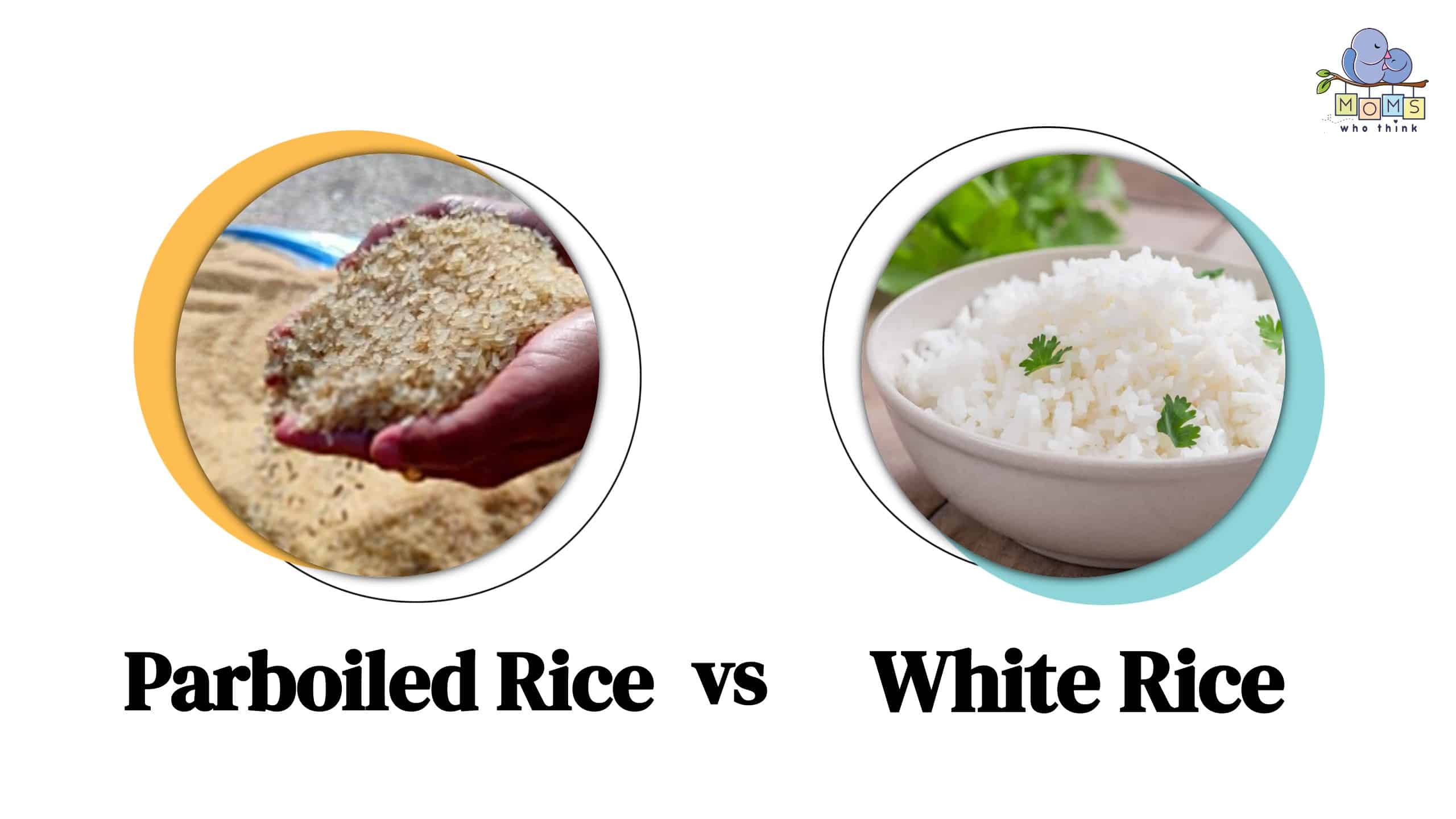Most people can often tell the difference between parboiled rice and white rice either through their cooking styles or appearance before and after cooking. This helps in some cases, but it’s good to be sure.
As the name suggests, parboiled rice means rice that’s been partly cooked for various reasons. One of them has to do with its nutritional value. Parboiled rice contains fewer calories and more protein and fiber compared to its white counterpart.
Intense boiling may lead to diminishing or total loss of nutrients considered vital to some consumers. Parboiled rice is also a method that manufacturers adopt to prevent breakage, as this is quite rampant during the milling process.
On the other hand, white rice is the one we see everywhere, including restaurants, grocery stores, and even our own kitchens. It is widely used and preferred since not much knowledge is required in its preparation.
White rice is also quite a versatile dish that will see you tap into your little-known culinary skills. Though it’s more popular than its parboiled counterpart, white rice is known to deliver fewer nutrients.
In both parboiled rice and white rice, the cooking style involves good old boiling till it's soft enough to chew on. In this article, we'll look at how different (or similar) both types of rice are.
What is Parboiled Rice?
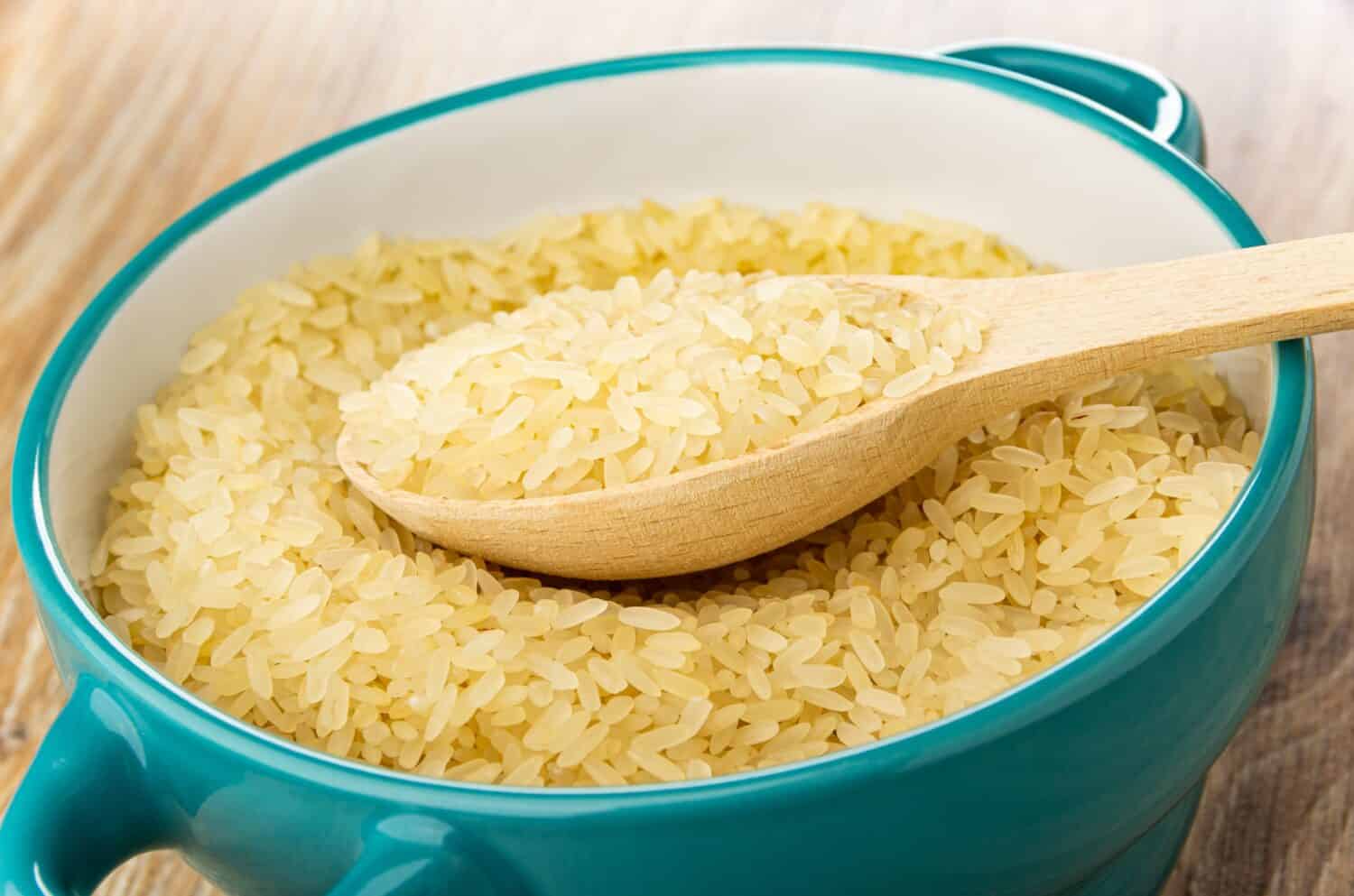
©Evgeny Tomeev/Shutterstock.com
As mentioned earlier, this is the type of rice that only requires partial boiling for different reasons. Some of them fall into the nutrition category, while others fall into the manufacturing category.
Parboiled rice came into the limelight when consumers discovered there was a whole new way of cooking and preserving rice. What caught the attention of some consumers (and still does) is that parboiled rice gets boiled with its husks still on.
The chief reason for this practice is so that the rice continues to preserve its natural nutrients.
Parboiled rice is available in various sizes, including short grain, medium grain, long grain, and extra long grain. Each of these contributes to the texture as well as your preferred cooking method.
How to Cook Parboiled Rice
As much as we all have (and love) our own ways of cooking parboiled rice, there are traditional methods that set the pace for us when we were still new to the whole idea. Parboiled rice requires more attention in terms of the time it takes to cook. Anything more or less might jeopardize your recipe and leave you crying foul!
Let’s start with the basics: First, get to know whether the same ratio that applies when cooking white rice is the one to use in this one. Well, it’s obviously not the same. Parboiled rice requires 2 ¼ cups of water for each cup of rice used.
Add salt to taste along with olive oil to increase its nutritive value and enhance flavor. Pay close attention to the source of heat used and ensure it doesn’t go overboard. Once the rice begins to boil vigorously, reduce the heat and allow it about 25 minutes for it to dry up completely.
One of the many benefits of cooking parboiled rice is that you are free to use different heating sources, including electric and traditional ones. This means the microwave, stove, instant pot, and rice cooker will be just as efficient.
However, be sure to use accurate settings for each of them to ensure quality results thereafter.
Since parboiled rice is more nutritious than its white counterpart, who said you can’t spice things up a little? Once the basic skills are out of the way, there’s room for more creativity and versatility in recipes that your family will grow to love and enjoy!
What is White Rice?
Most of us are familiar with what white rice is, but we don’t mind giving our version. White rice is the refined type of rice that stands out from all the others, such as brown rice. This means it’s had all its husks removed, revealing what’s inside: the white we see all the time in stores and restaurants.
White rice undergoes the refining process so as to make it easier to digest, especially for consumers with digestion issues. This process also makes it easier to preserve and store white rice, whether in its pre-cooked or cooked form.
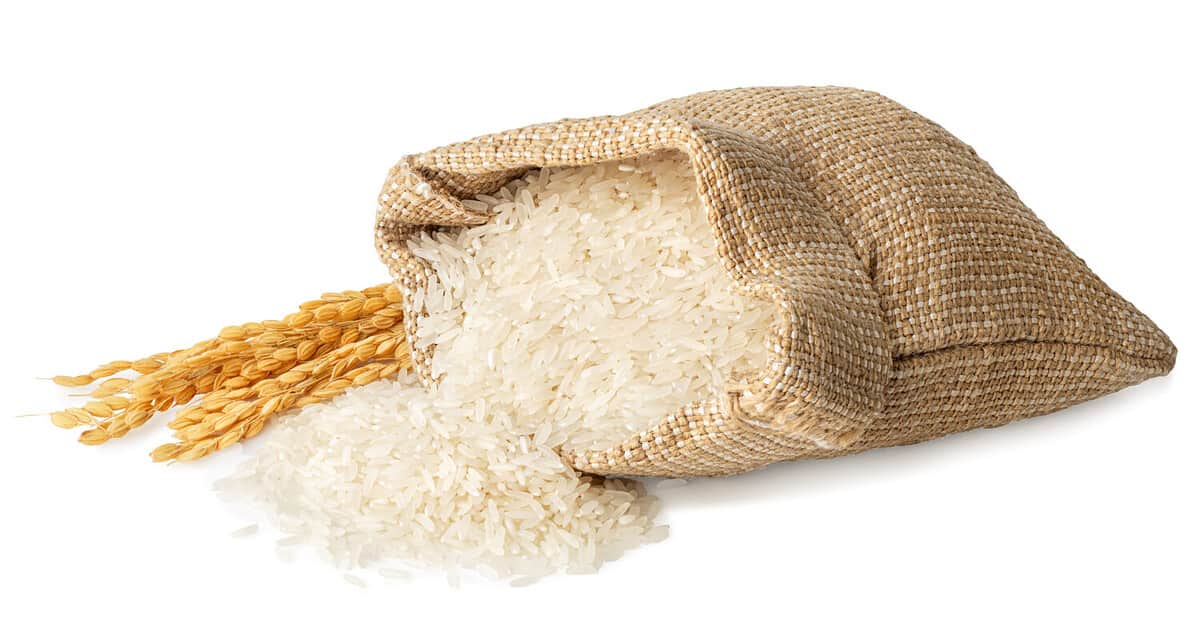
©Alter-ego/Shutterstock.com
Besides, don’t we all just love the taste, flavor, texture, and versatility of white rice? It may have been stripped of its original nutrients, but this is not to say it has absolutely nothing to offer. On the contrary, different brands of white rice make up for this by enriching in various nutrients. These include iron, which prevents malnutrition for consumers who are mostly dependent upon white rice.
Furthermore, white rice has gained popularity among consumers mostly because it’s easier to come by than all its other counterparts. It’s also easier to pair up with other side dishes, such as stews and salads.
How to Cook White Rice
This has emerged as one of the easiest meals to prepare in the world if its traditional method is anything to go by. We are all aware of the boiling method that entails using 2 cups of water for every cup of rice.
You can play around with a variety of spices to add to your white rice just as long as you adhere to the required water-to-rice ratio. Cooking white rice is one of the most exciting ways to test and discover your culinary skills.
White rice can be paired with multiple sides, such as seafood, poultry, beef, and many other types of stews, which may include grains. It’s a widely preferred dish because the water-to-rice ratio may be the only rule you need to follow strictly. Everything else is entirely up to you.
For instance, if you’re in the mood for a spicy poultry rice dish, you can gather up your condiments and other requirements and watch your efforts progress towards something quite sumptuous.
Be sure to have a cool glass of water or fresh juice on standby in case you overdo the spices and your tongue is on fire!
Can You Substitute Parboiled Rice For White Rice?
This mostly depends on factors such as the size and shape of the rice in question. For instance, long-grain parboiled rice may be an adequate stand-in when you’d like to try it for some reason.
However, if you’re looking for a healthier choice, you may want to look elsewhere. Parboiled rice and white rice are worlds apart when viewed from the nutrition and flavor lenses. They greatly differ regardless of the cooking method you choose to use.
For instance, an individual who’s looking to shed some pounds may not rely on white rice as a substitute for parboiled rice. We’ve already tackled that white rice has been stripped of its nutritional contents. This is one of the main reasons it’s not a possible substitute.
Moreover, parboiled rice may not be the number one selection for consumers looking for an alternative that’s easier to digest. It may be rich in a wide selection of nutrients, but digestion may be a stumbling block.
Are Parboiled Rice and White Rice the Same Thing?
If you were to look into factors such as nutrient content and appearance, you’d agree that parboiled and white rice are not the same thing. They may be from the rice family, but they differ in many ways.
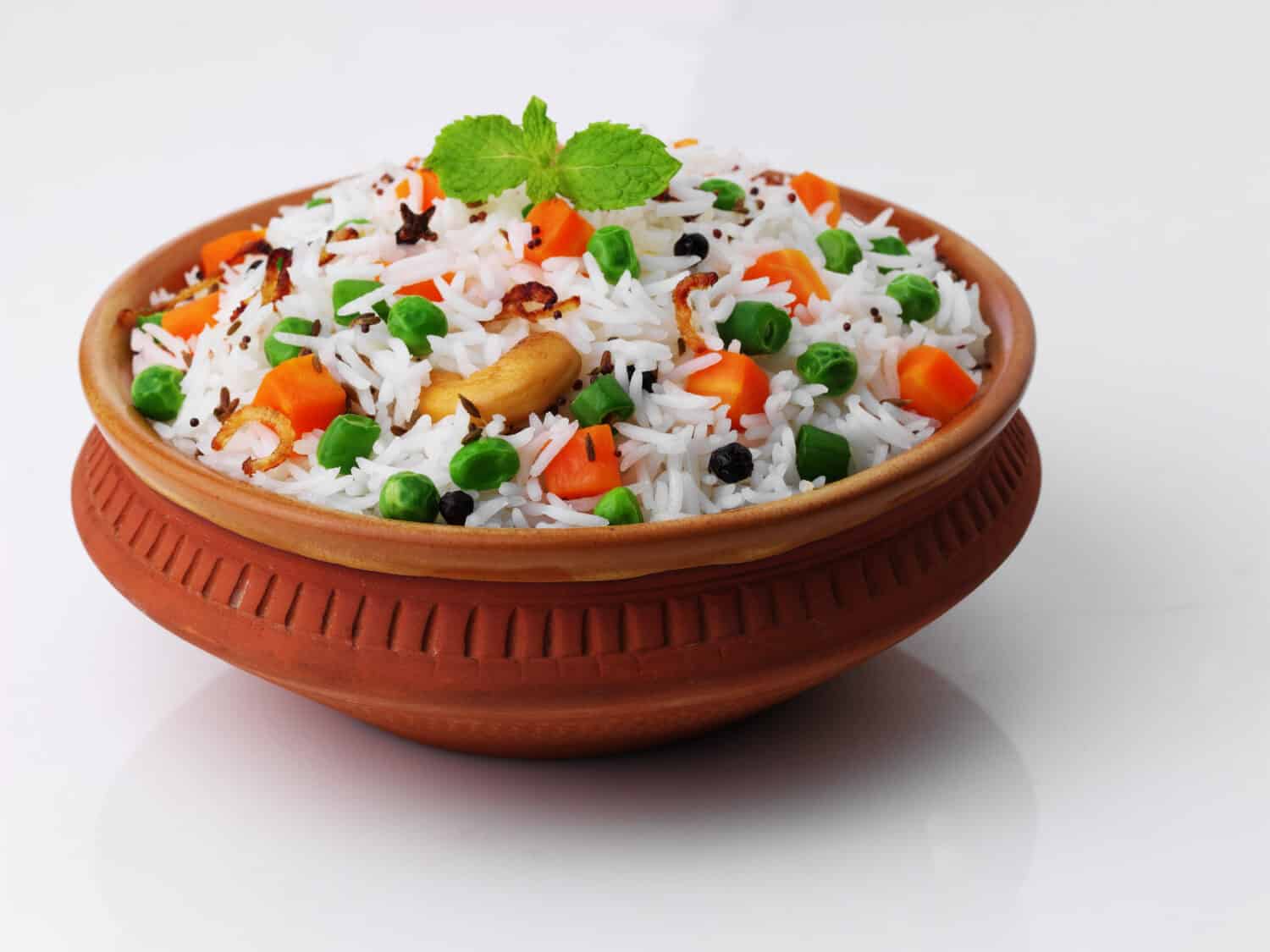
©SMDSS/Shutterstock.com
A deeper look into how parboiled rice is handled before it hits the stores tells it all. First of all, it undergoes various processes right after harvesting before milling. They include soaking in water, steaming, then drying in the sun.
The rice adopts a whole new yellowish appearance as opposed to white, so this tells you what you need to know: they are not one and the same thing.
Again, they differ significantly when it comes to nutrition. Parboiled rice gets to keep its natural nutrients, while white rice is stripped of them for various reasons.
Another thing that makes the two differ from each other is the time taken when cooking. Parboiled rice takes less time to cook compared to white rice. This doesn’t affect its texture in any way, as it tends to maintain its firmness. Not to mention that the firm texture of parboiled is one of the features that help tell the two apart. White rice is softer and far more sticky by nature.
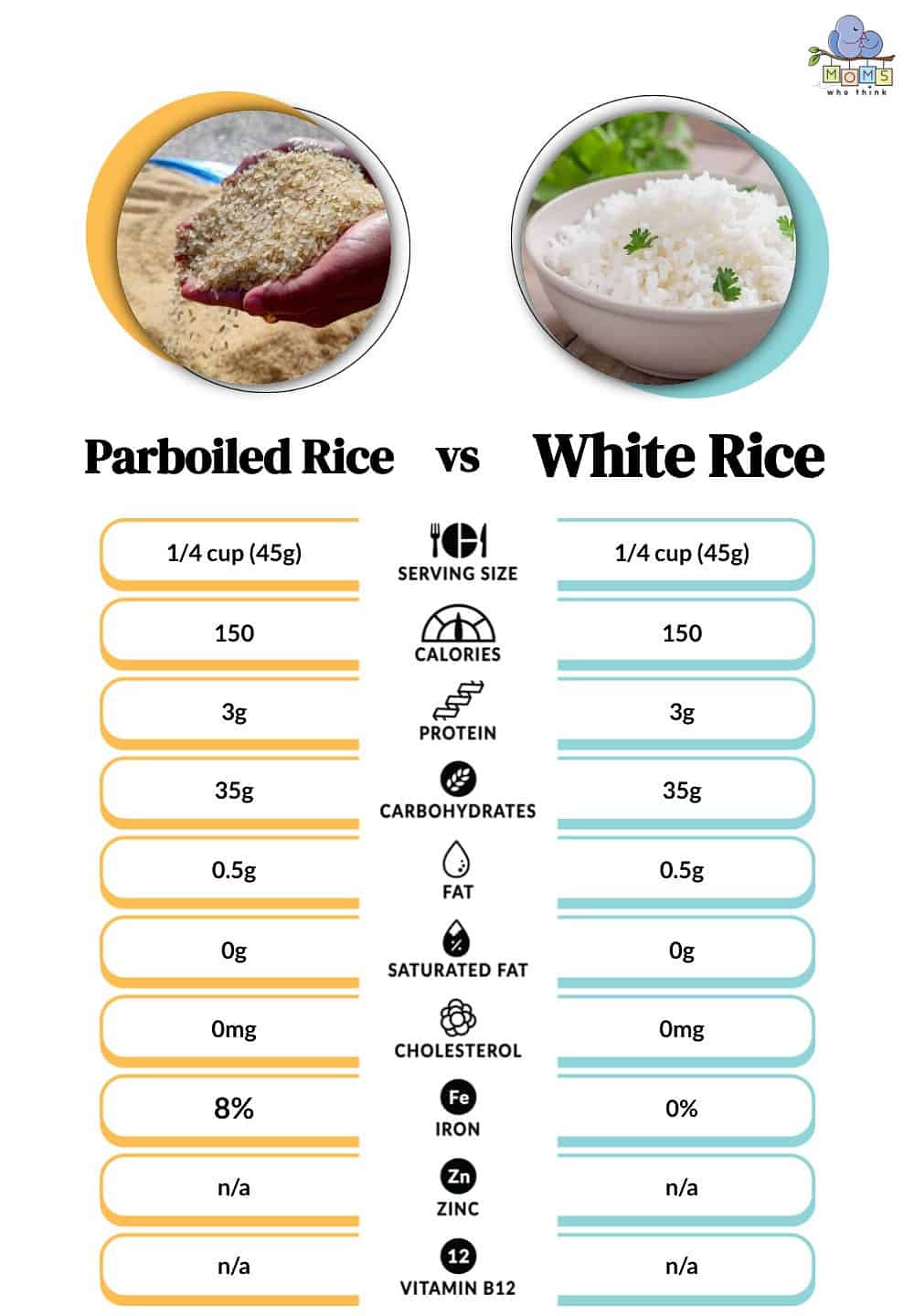
©
What Are Food Substitutes For Parboiled Rice?
Parboiled rice will not always be your go-to suggestion for some reason. It could be that you’ve eaten it for far too long and would love another suggestion that’s something a bit like it, especially in terms of nutrition.
Or maybe parboiled rice is out of stock in the stores around your area, and you need a food suggestion that would fill up for it.
Worry no more; here are tried-and-true suggestions for those in search of worthy substitutes for parboiled rice and why we think they’d be worth your time;
- Brown Rice – This is, hands down, one of the most nutritious alternatives to parboiled rice. Brown rice contains lots of fiber, especially in the outer layer, which consists mainly of bran. In the inner part of the grain lies carbohydrates which your body depends on for energy.
- Quinoa – Most of us already know that quinoa is one of the richest sources of protein because it contains amino acids that your body just can’t do without. Furthermore, it contains other minerals such as Zinc and Iron. However, you may want to use quinoa as a side dish since it’s also known to be excessively rich in calories. This is a con for those who wish to lose weight to a certain extent.
- Barley – When we hear barley, the one thing that immediately comes to mind is wheat. The simple reason for that is that they contain almost the same level of nutrients.
- Shredded Cabbage – As an adult, ‘eat your veggies’ is beginning to make more sense than it did when you were a child. Shredded cabbage gives life to food due to its unrivaled vegetable flavors as well as its highly nutritious content levels. Shredded cabbage is a highly recommended alternative in case you’d like to take a break from parboiled rice.
- Orzo – This one won’t make you feel like you cheated on your beloved parboiled rice because it almost takes the same shape. You may also be interested to know that orzo makes the cut to this list due to its moderate protein content. This works perfectly for individuals whose bodies are not designed to accommodate excessive protein.
What Are Substitutes For White Rice?
As delicious as it tastes and sounds, you’ll feel your body asking you to take a break from white rice at some point. It could be for weight loss reasons, health reasons, or maybe your budget is too tight to squeeze it in.
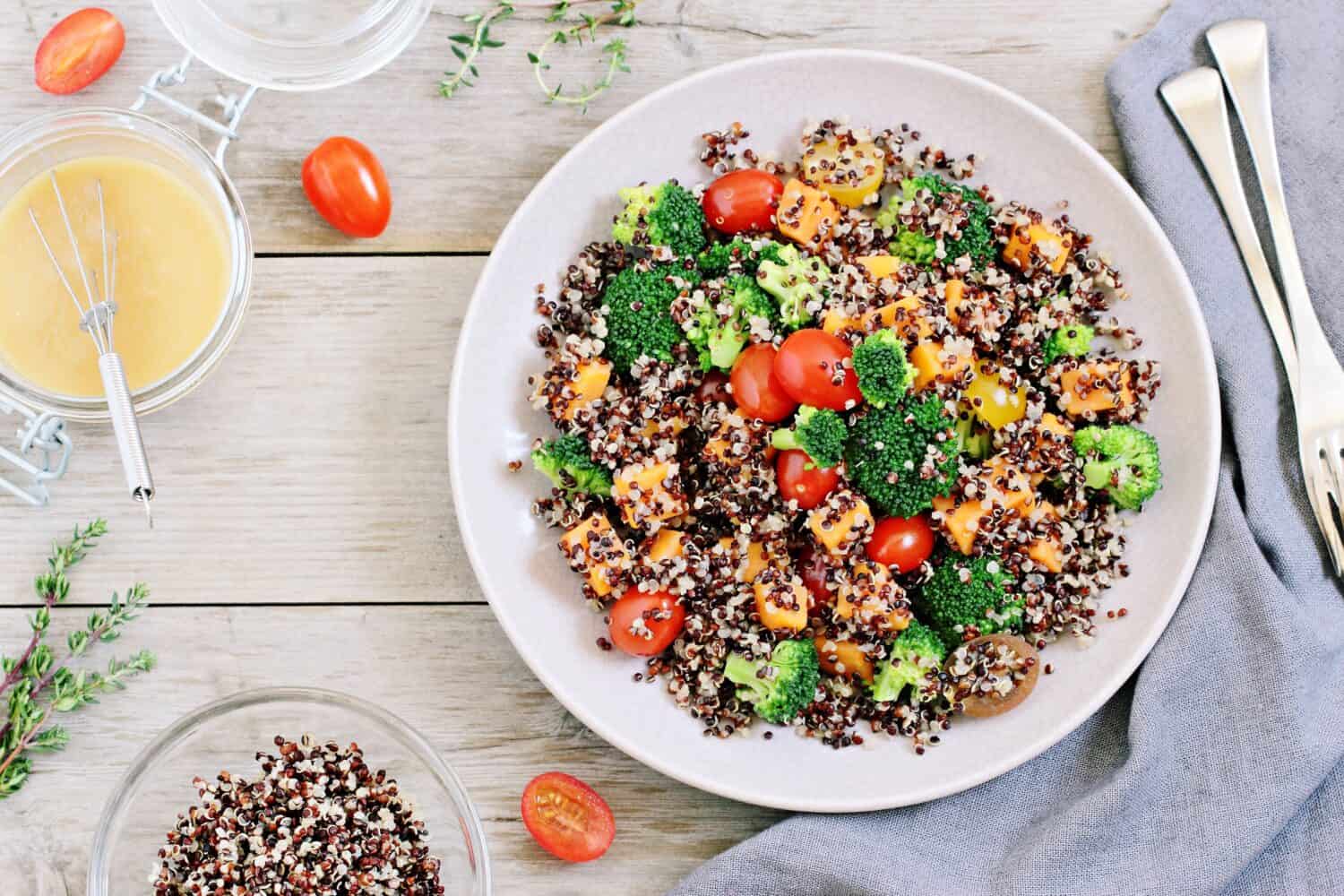
©Losangela/Shutterstock.com
Here are substitutes for white rice that you won’t regret trying out;
- Brown Rice – This makes for a wonderful substitute simply because of its high nutritional content. It’s also easier to locate at your local grocery stores these days than it was a while back.
- Farro – It’s no surprise that not everyone is familiar with Farro. No worries, we’ve got your back! Farro is a wheat-based whole-grain product that serves as a trustworthy substitute for white rice. Its significant levels of fiber and protein are more than enough to write off white rice for some time.
- Quinoa – The one thing that qualifies it as a healthy and worthy alternative is that it contains no gluten. It’s also rich in protein, something that’s rare to find in white rice, and is healthy for those looking to adopt a balanced meal plan for the long term.
- Shirataki Konjac rice – May sound so foreign, but the truth is, it’s been around longer than most of us may have noticed! Shirataki Konjac rice earns the top spot in the books of every consumer who’s looking to lose weight. It’s a low-carb option that’s rich in fiber and is said to improve digestive health. What may not be clear is that the Shirataki Konjac rice is an actual vegetable, but manufacturers put their creative juices to work and shaped the roots as rice.
How to Store Parboiled Rice and White Rice
At the end of the day, proper storage is a crucial skill that saves you endless trips to the grocery store.
Parboiled Rice
Parboiled rice can be stored securely for up to 30 years. However, this is the case only when you adhere to the proper conditions of storage. Ensure that your storage room is oxygen-free, and away from direct light. What’s more, be sure to clean up the space as frequently to avoid invasion by different kinds of pests.
When cooked, pack your parboiled rice in an airtight container and store it carefully in the refrigerator. The cooler temperatures cause an air of inactivity, ensuring that your food stays fresh for longer.
White Rice
It shares the same advantage as parboiled rice as it can also be stored for up to 30 years. White rice doesn’t require much effort in terms of storage and handling. Its storage conditions match those of parboiled rice. This means your storage space should be roomy to avoid making it conducive to harmful pests.
Storing cooked white rice is definitely not rocket science. All you need are multiple storage containers and lots of space in your fridge. Store the cooked rice in the freezer if it won’t be part of your meal plan any time soon.
Comparison of Parboiled Rice vs. White Rice
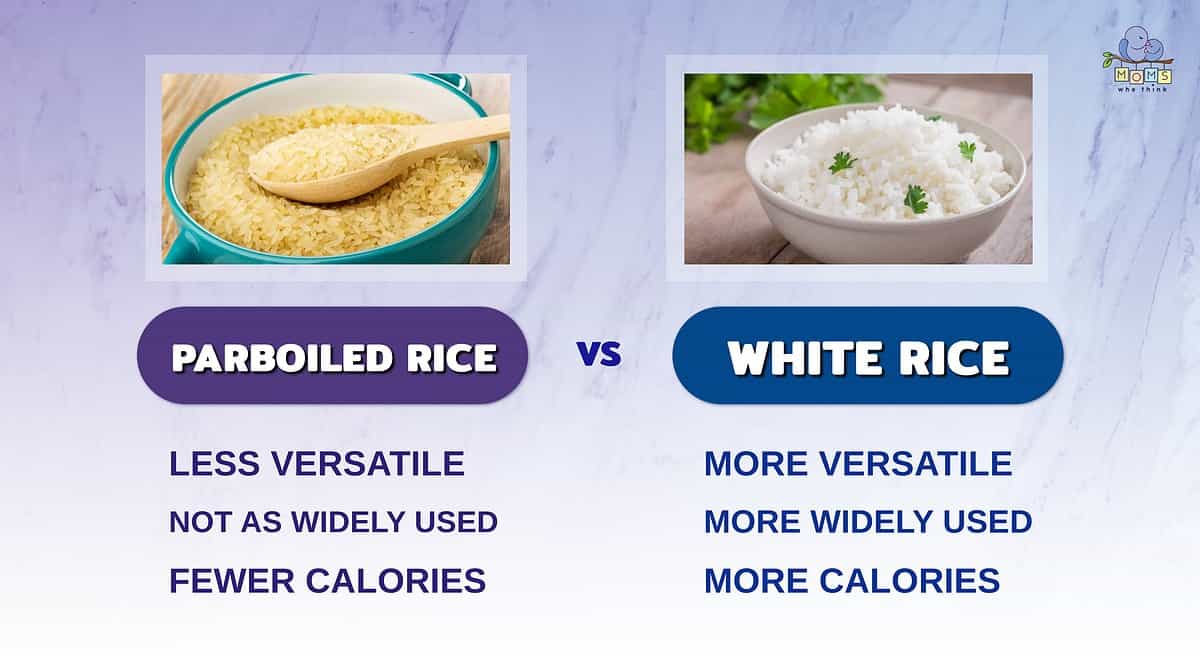
We can all agree that not all rice is created equal — and there is an abundance of options. As revealed in this article, parboiled rice and white rice are no exception. Let's break down a few of these differences:
- The most obvious difference is the color. Parboiled rice has a yellowish tone to it, while white rice is, well, white.
- White rice is typically more widely used than parboiled rice, particularly because of its versatility.
- Due to the various processes it undergoes, parboiled rice is slightly more nutritious than white rice.
Looking for a new recipe to try that uses white rice? Check out this easy crockpot rice, corn, and spinach casserole:
Print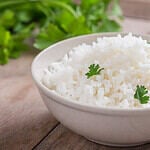
Rice, Corn, and Spinach Casserole
Ingredients
10 ounce package frozen chopped spinach, partially thawed but not drained
1 1/2 cups white rice, uncooked
10 3/4 ounces condensed cream of mushroom soup (canned or homemade)
2 cups water
4 ounces diced green chiles
1 can (15 1/4 ounces) whole kernel corn, drained
1/2 teaspoon garlic powder
1 cup shredded sharp Cheddar cheese
Instructions
1. Combine the undrained spinach, rice, soup, water, chiles, corn, and garlic powder in a 3 1/2 or 4 quart slow cooker. Mix well.
2. Cook on HIGH for 2 to 2 1/2 hours, or just until the rice is tender.
3. Sprinkle the cheese on top, cover and cook 5 minutes longer, until the cheese is melted.
